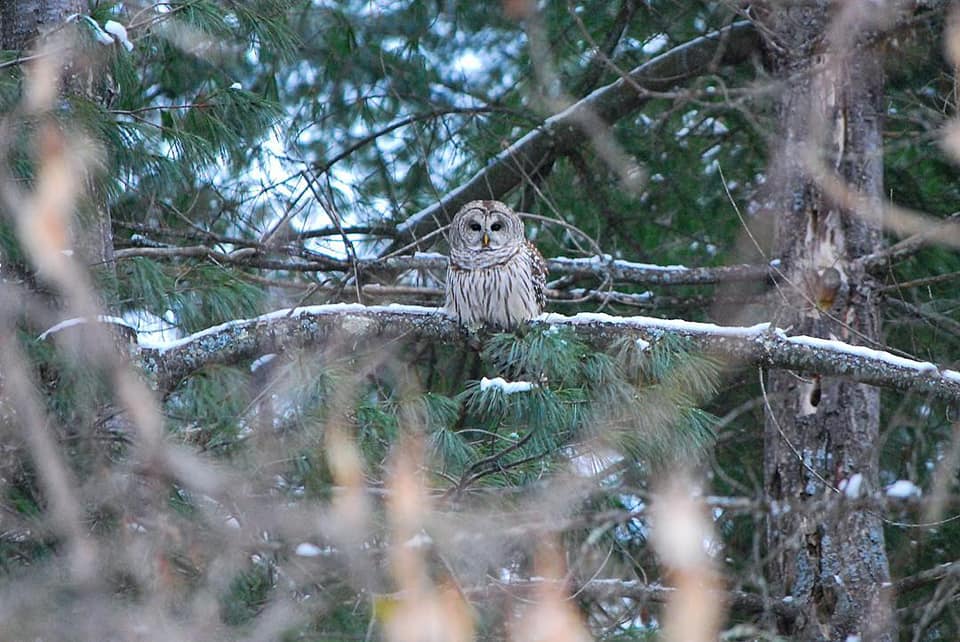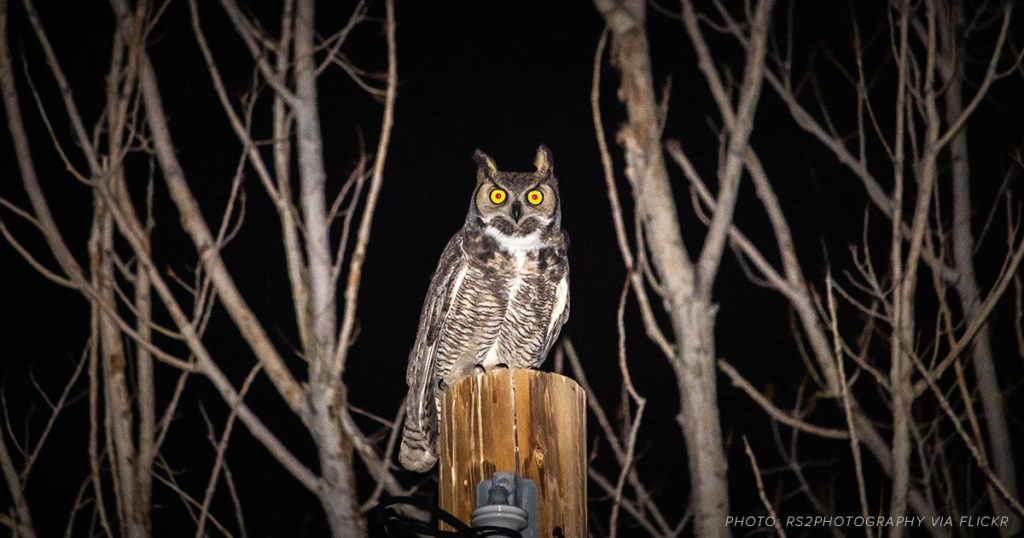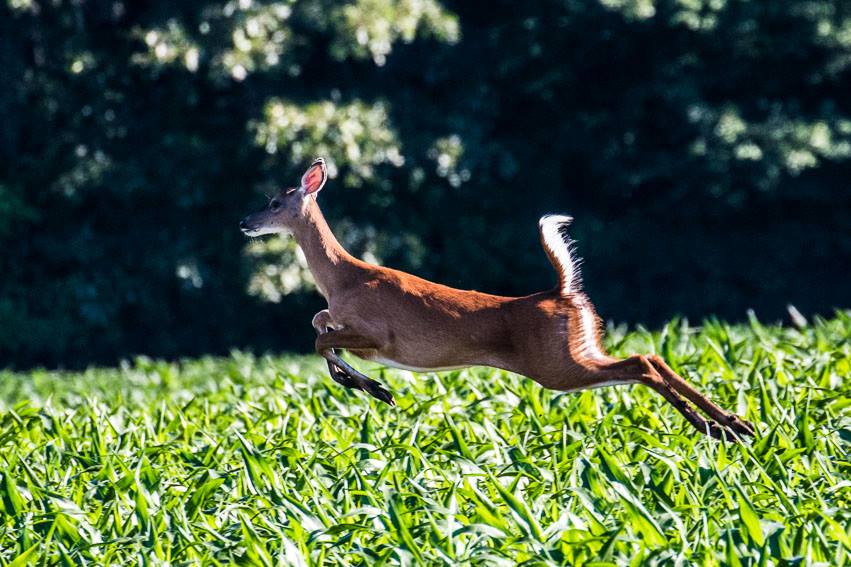Have you ever wondered why some animals are so well adapted to living in the dark? Animals have evolved to use the cover of the night to escape the heat of the day and avoid human activity, others need the night to hunt, mate, or hide from predators. These animals have developed a keen sense of smell or hearing, and adapted vision to navigate the night.
Many animals including owls, deer, and coyotes have a special part in their eyes called a tapetum lucidum. The tapetum lucidum helps with night vision. It is made of thick reflective cells and is beneath the retina. It is similar to a mirror that reflects light back to the retina a second time. This gives the rods a second chance to absorb the light. Sometimes light reflects off the tapetum lucidum, and the animals’ eyes appear to glow.
Owls
Owls actually have great vision, due to their large eyes which let a lot more light in when hunting at night and in the day. Owls are also well known for relying on their hearing to hunt and locate prey. Their ears are actually hidden within the feathers around their face. An owl also has round disc shaped face, which acts like a “radar dish” to help guide sounds into the ears.
The most common owls you will hear in your Westport backyard are Barred and Great Horned Owls.


Barred Owls have a distinctive hooting call of 8–9 notes, described as “Who cooks for you? Who cooks for you-all?” This call carries well through the woods and is fairly easy to imitate.
Great Horned Owls advertise their territories with deep, soft hoots with a stuttering rhythm: hoo-h’HOO-hoo-hoo. This call is thought of as the classic owl hoot. If you hear two Great Horned performing a duet, it is usually a breeding pair with the female’s call noticeably higher in pitch.
Deer
Deer have adapted a variety of different feeding patterns to fit their environment. They do behave more like a nocturnal animal during the colder months. However, when the warmer months roll around, you’ll see them acting more like crepuscular animals, being active during dawn and dusk aka the twilight hours.

Coyotes
Many people think that coyotes are nocturnal and sleep during the day in rock crevices, dens, or culverts. However, coyotes are naturally diurnal, meaning they’re active during the day. Coyotes have changed their hunting rhythm to avoid human conflict. Coyotes are opportunistic animals, which means they are not going to pass up an easy meal whether it’s during the day or night.
At night, you will often hear loud yips and howls from coyote packs. One reason for the howling is to signal the pack—really a family group—back together again after a period of individual hunting. A second reason is to advertise their presence to other packs, warning those other family groups against trespassing across territorial boundaries.
Bats
Bats can see as well as humans can, but they have evolved a sophisticated method of using sound that enables them to navigate and find food in the dark called echolocation.
Bats produce echolocation by emitting high frequency sound pulses through their mouth or nose and listening to the echo.
The two most common Bats in Massachusetts are the Little Brown Bat (Myotis lucifugus) and the Big Brown Bat (Eptesicus fuscus).

Moths
Moths play a vital role in food webs and are an important food item for songbirds, mammals, and other insects. Moths also are important pollinators, particularly those that are active after dark, when many other pollinating animals have settled down for the night. Some examples of plants that bloom at night are Moonflower or Evening Primrose.
For every 1 Butterfly, there are 19 species of Moth. There are a total of 424 Moth species in Massachusetts
Photo of Great Horned Owl from www.greenbelt.org, bat echolocation from askabiologist.asu.edu, moth from www.nzgeo.com.

